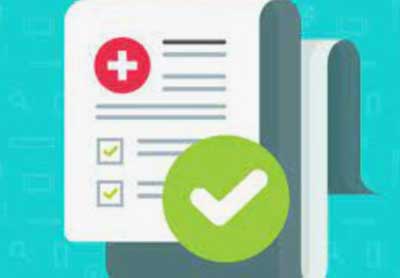Relevance: GS-2: Issues Relating to Development and Management of Social Sector/Services relating to Health.
Key Phrases: DDLHM, Public Health, Public Sector Healthcare, Functional Epidemiology, DPHPM, DHS, DME, North Arcot Disease Surveillance Model, NADHI Bulletin;
Context
- Recently Tamil Nadu Chief Minister M.K. Stalin, declared his vision for decentralised district-level health management (DDLHM).
- The post-COVID health ecosystem can be rejuvenated with this vision.
Key Highlights
What is Health?
Health has 2 aspects
- Subjective
- It stands for physical, mental and social well-being.
- Objective
- It stands for the absence of disease which has to be validated with evidence.
What is Public Health?
- Its primary aim is disease prevention.
- It involves interventions targeted at social and environmental disease determinants.
- Public Health along with Public Sector Healthcare has the common goal of keeping citizens healthy and improving health indicators.
What is Functional Epidemiology (FE)?
- FE is the basic foundation of Public Health.
- Disease Surveillance and Epidemiology are two important aspects of
Public Health.
- Disease Surveillance provides real-time information for action.
- FE analyses the data and facilitates planning.
Interventions in Healthcare in Tamil Nadu (TN)
- Madras province was the only presidency which had provision for
Public Health Act.
- This act created the Department of Public Health and Preventive Medicine (DPHPM).
- DPHPM has been in existence since 1930.
- After state reorganisation, TN has followed a 3-tier hierarchical
structure in healthcare
- Primary healthcare has been assigned to DPHPM.
- Secondary healthcare has been assigned to the Department of Health Services (DHS).
- Tertiary healthcare has been assigned to the Department of Medical Education (DME).
- Each of these departments has its own directorate within the Health Ministry.
The success of the Surveillance model in TN
- TN was the first state to eliminate
- Smallpox,
- Guinea worm,
- Polio
- Measles mortality
- Also, TN was the first in India to document
- Japanese encephalitis,
- Dengue virus types 1 to 4,
- HIV and
- Hepatitis B infections
Best Example: North Arcot District’s Surveillance Model
- Its District Level Disease Surveillance (DLDS) model pioneered pulse polio immunisation.
- Its monthly health information bulletin (called NADHI) was appreciated globally.
- Similar models can be revived and upscaled to ensure we become effective and efficient in detecting, counting and countering the disease.
Issues with healthcare
During COVID Pandemic
- Lack of Good Epidemiologists at the right place.
- India has good epidemiologists but they remain confined to utilising their expertise in Teaching and Research.
- Lack of functional epidemiology led to inadequate forward planning.
- This was widely seen during the second wave where several disease models failed to predict an exponential increase in cases.
- Paucity of Data collection, maintenance and analysis.
- The pandemic saw the disease surveillance measures picking up.
- Before it, most of the states had failed to establish a system that
collected and verified data on diseases or causes of death.
- Peter Drucker has famously said, “What can’t be measured can’t be managed”.
Other issues
- Disparity in Quality of Healthcare
- On one hand, Private healthcare facilities provide world-class healthcare, which has caused medical tourism to flourish in India.
- On the other hand, the Quality of Public healthcare facilities in many districts is poor.
- The significant OOPE (out-of-pocket expenditure)
- As per Economic Survey 2020-21, an increase in public spending from 1% to 2.5-3% of GDP (as envisaged in the National Health Policy 2017) can decrease the OOPE from 65% to 30% of overall healthcare spend.
- Right to Health is being denied
- RTH is a legitimate right of every citizen.
- It ensures dignified living (Article 21 of the Indian Constitution).
Health and Union Budget 2022
- The health sector has been allocated Rs 86200.65 crore in the Union Budget, a hike of 16 percent over Rs 73,931 crore in 2021-22, with the government also announcing a National Tele Mental Health Programme and roll out of an open platform for the National Digital Health Ecosystem.
- Recognising the accelerated increase in the number of mental health problems due to the pandemic, Union Budget announced the launch of a National Tele Mental Health Programme, inclusive of a network of 23 tele-mental health Centers of Excellence (CoE), with National Institute of Mental Health & Neurosciences (NIMHANS) being the node & the International Institute for Information Technology- Bangalore (IIITB) providing technology support.
- The announcement stands as a testament to the Indian Government’s commitment to a holistic healthcare approach that recognises the strong interlinkages of the body, mind, and soul. The establishment of the National Tele Mental Health Programme is an excellent step for the nation to systematically attack the problem and break the taboo around mental health by helping its citizens proactively.
Way Forward
- Epidemiologists must aid in managing Public Health.
- Their aid will be transformational in forward planning.
- Disease surveillance ecosystem must be made robust.
- Utilising Smart City Infra, Command Control Centre (by Bhopal) as a COVID war room can be a guiding example.
- Sufficient attention to Public Health would lead to a better ability to forecast the emergency and intervene proactively.
- There is a need to design an equitable health delivery system for
everyone, with a seamless referral from primary to tertiary care.
- State governments must also design a just system of universal healthcare, maximising public-private partnership.
Conclusion
- Health must be managed like an asset. Only then Intellectual, Physical and Spiritual capacity of Individuals can be fully realised. These able-bodied and sound-minded individuals will lead India in Amrit Kaal.
Source: The Hindu
Mains Question:
Q. What is Public Health? What challenges were faced during COVID from the perspective of Public Health? Suggest a suitable way forward.







